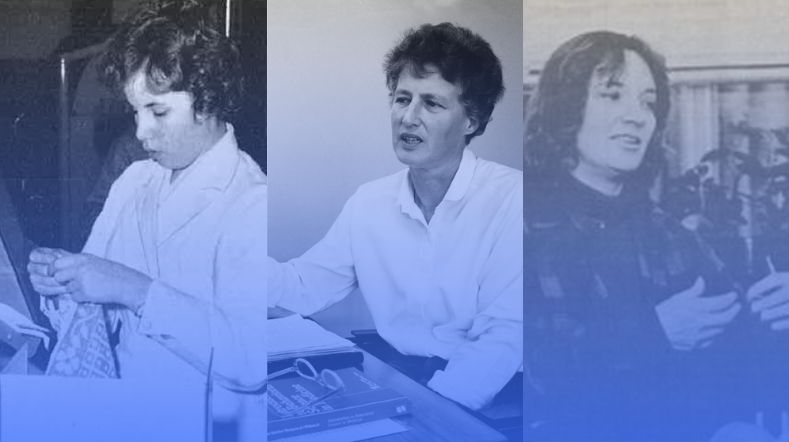
Flying Food takes next step in protein transition with crickets in Africa
With the Flying Food project, TNO, together with partners, is committed to accelerating the protein transition in Africa. The Flying Food consortium is setting up a value chain using crickets as a healthy food. The vitamins, minerals, and proteins in crickets are an affordable and sustainable alternative to meat and fish, as well as a source of income for both small and large farmers. There are already 80 small-scale cricket farmers in Kenya and Uganda, and a few large farms in Kenya. The first large cricket farm will soon be opened in Uganda, as demand for cricket flour now exceeds supply.
Insects are already widely used as animal feed and the human food market is also growing. The World Bank sees great potential for insects as food, estimating a market size of 7.3 billion euros in Africa by 2030. This is because there is a great need for protein, insects are easy to breed, and they also do well in areas of extreme drought. Insect farming offers many advantages: it requires little space, is light work, creates jobs and income, and provides a good food source for people.
‘Switching to protein from insects could be one of the answers to climate change, as raising insects requires little water and feed, and produces limited greenhouse gas emissions. All these reasons combined mean that with Flying Food, we’re committed to creating a well-functioning and stable cricket value chain for consumption in various African countries,’ says Mathilde Miedema, I4D programme director.
Insect farming for sustainable protein production
TNO wants to encourage local entrepreneurship in low and middle-income countries with the Innovation for Development (I4D) programme. ‘The protein transition is an important topic for the I4D programme. A lot is happening in that area in the Netherlands and Africa, and we’re linking those developments so that we learn from each other and accelerate progress. As early as in 2012, we realised that insect farming might be of interest. It’s a sustainable method of production that we thought was suitable for African countries, where insects, such as grasshoppers, termites, and ants, are already eaten in some regions. They’re caught in the wild in certain seasons and are a real delicacy. By setting up insect nurseries, insects become available on the market all year round. We chose crickets because they’re easy to breed in captivity and are very similar to grasshoppers as regards taste and type of food. Insect farming is more affordable and sustainable, and a great alternative to conventional agriculture.
Shifting to more sustainable production is important in any case and for this reason, there’s increasing interest in insect farming worldwide. If the world’s population has grown to nine billion by 2050, we’ll need two Earths to supply everyone with protein using traditional animal sources. A kilo of protein can be produced much more effectively with insects; one kilo of beef, for example, requires as much feed as 15 kilos of insects. Moreover, greenhouse gas emissions are as much as 100 times lower than for the production of pork or beef. Insects contain everything: vitamins, minerals, and proteins. Besides, it’s tasty and healthy,’ says Miedema.

‘Switching to protein from insects could be one of the answers to climate change, as raising insects requires little water and feed, and produces limited greenhouse gas emissions.’
Flying Food consortium
The idea of introducing insects to Africa was prepared thoroughly. ‘In 2013, already a decade ago, we started a feasibility study in several countries. We explored the technical possibilities and identified the market potential. Are there farmers who want to breed crickets and are there consumers who want to buy them? The Flying Food consortium was established in 2014 and we launched in 2015, first in Kenya and Uganda, then later adding Nigeria. The Flying Food consortium consists of a number of African partners and four Dutch partners; TNO, Wageningen Food & Biobased Research, New Generation Nutrition, and Kreca Ento-food.
The consortium is jointly building the ecosystem for public-private partnerships in Sub-Saharan Africa, developing new projects, attracting funding and investment capital, transferring knowledge and experience of the cricket business to local partners, and guiding the innovation of the new cricket value chain. It’s very inspiring to work on, because we learn a lot from each other. We learn from the local African parties and they from us. Now we want to give an extra boost to what we’ve built and scale up further as the market evolves,’ adds Miedema.

Orchestrating an ecosystem
Crickets are mainly marketed as cricket flour, an attractive brown powder that’s added to porridge, bread and biscuits. ‘It gives the products much more nutritional value. Demand for cricket flour is increasing and now is the time to scale up, both in volume and quality. First in the countries where we already operate and then in other countries. As demand currently exceeds supply, there’s a need to ensure a reliable level of production all year round. Our objective is for farmers and companies to scale up and set up the value chain themselves, but we’ve noticed in recent years that they’re still a bit too small and lack clout. They ask us for additional support, which we provide by playing an orchestrating role, shaping and driving collaborative ventures. We make sure the whole ecosystem is in order and balanced. It’s a different role from the one we had in the beginning, when we were starting up,’ Miedema explains.
Miedema recently visited Uganda and Kenya with colleague Yvette Fleming (working as senior business developer in Child Health and I4D) to speak to local stakeholders. ‘The value chain is developing in the right direction and we have partners – cricket breeders, entrepreneurs, buyers, knowledge institutions, and universities – who are now at the heart of the new ecosystem. In Kenya, we have Charles Odira of MIXA, who’s very good at raising crickets, but also makes cricket flour, bakes and sells cricket bread, trains farmers, sells eggs, and acts as a knowledge centre. By optimising the breeding process, scaling up, and training more farmers, we’re slowly professionalising cricket farming.
Market demand is also increasing in Uganda and it’s important to achieve a continuous supply chain there as well. Together with our partners, we’ve developed an approach to make this happen. We orchestrate the process to create a fully-fledged chain. Among other things, for example, we put an entrepreneur who wants to start a medium-sized farm – 500 crates, with 2,500 crickets per crate – in touch with potential investors. This farm will be operational within a few months,’ Miedema says.

‘Cricket powder is very nutritious and a great supplement to the diet of these children, which is currently often not varied enough.’
Source of food and jobs
In Asia in particular, eating insects is now commonplace, and people are starting to do so in Europe as well. Crickets have been accepted as a safe food source for humans by the European Food Safety Authority (EFSA) since February 2022. Defatted cricket powder was added recently, in new legislation in January 2023. The ‘house cricket’, which is found worldwide, may be traded whole, frozen or dried, or as a powder, and used as food. It is the third insect, after the yellow mealworm and the locust, that the EFSA has declared safe for human consumption.
‘Whereas in Laos, for example, eating insects is fully integrated into the local diet, it’s quite a step for some African countries and an even bigger one for European countries. As Dutch people, we’re still somewhat horrified, but we also eat prawns, and that’s really no different. It turns out that if you no longer see the legs and wings, by making the insects into a powder, for example, people are much more willing to eat insects. Cricket flour sells well, as entrepreneurs use its excellent nutritional value as a selling point. The business model is attractive and offers a lot of potential for entrepreneurs. The combination with the societal impact on food security makes it a fantastic transition,’ says Miedema enthusiastically.
‘The great thing is that raising insects is not physically demanding, making it suitable for women and the elderly as well. Moreover, small farmers can add it to their existing activities, so they’re not solely dependent on their cassava crop, which is drought-tolerant but affected by the amount of rainfall. This diversification by farmers increases their self-sufficiency. We also try to make the link to health. During our trip early this year, we therefore entered into discussion with parties that focus on the health of pregnant women and young children. We connected them with our cricket farmers and cricket porridge will now be produced for babies and young children. Cricket powder is very nutritious and a great supplement to the diet of these children, which is currently often not varied enough,’ Fleming adds.
About TNO
Innovation for life
We are TNO. A safer, healthier, and more sustainable life. That's what we are all about. As an independent research organisation, we are the driving force behind innovation. We make knowledge serve the common good. Since 1932, it has been our mission to give the right answers – and to ask the right questions. For the world of today and tomorrow. By combining disciplines and domains, we can tackle the most complex questions. On the road to a better life and a brighter future.
Will you join us?
We are looking for entrepreneurs and investors to expand our collective. Are you or is your company interested in cricket farming, or can you contribute to scaling up and expanding cricket farms in Africa? Are you interested in purchasing crickets or cricket flour in Africa on a large scale, or would you like to invest in cricket farms in Africa? If so, don’t hesitate to contact us.
Protein transition
Want to know more about how TNO creates access to affordable proteins and livelihood in low and middle income countries?
Get inspired
Time setter story: Janice Odijk on objective recruitment


Time setter story: Meike van den Eijnden on the TNO Traineeship


Meet the expert: D-score as a new outcome measure for child development
Time setter story: Jayeeta Sengupta


International Womens day 2025



